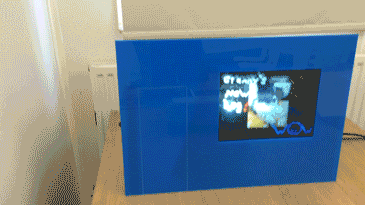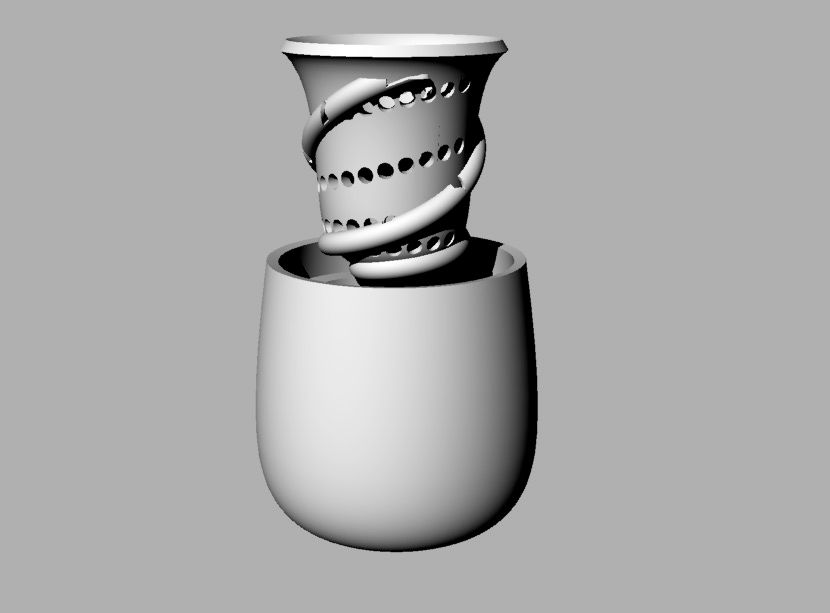
InTune





While increased life expectancy was one of the triumphs of the 20th century, it’s set to be one of the greatest challenges of the 21st due a changing dynamic within society where the elderly will one day outnumber the young. This has already led to an increasing number of dementia diagnoses amongst the population, but when looking at the products available in this market it’s clear there isn’t enough being done to address this issue. New neurological studies have shown that the last portion of the brain affected by Dementia is that which pertains to music, and that memories still exist here even in the most severe stages of illness.
The InTune harnesses this power by allowing the user easy access to their favourite songs at the push of a button. The song’s musical key is tracked and the corresponding musical scale is then sent to the keys at the front, allowing users of any musical ability to play along. This cognitive engagement increases brain activity, and improves the dementia patient’s articulation and communication skills. This means that not only will the user recall memories once considered forgotten, but be able to impart them to their loved ones with greater ease.
This project was for the Aberdeen children’s hospital with the aim being to improve the lives of children during their stay in the hospital, with my focus being on isolation rooms. Through my research I ascertained that the children’s main point of contact and socialisation was the window between their room and the rest of the ward, upon which they would write messages as well as play games with people on the other side.
By utilising projectors and rear projection film, I could turn the window into an interactive touch screen surface, upon which children could write and draw on both sides as well as receive messages and photographs sent by relatives.
This would allow for a three way dialogue to take place between the child, their family and the staff and patients in the hospital as well as better displaying the child’s personality, mood and feelings to those outside the room. The Archie foundation selected it as one of their top 4 choices concerning which proposals to make a reality.
Archie






Bloodline





This project explored an alternative approach to the family tree, as I discovered that the reason most people were uninterested in their genealogy was due to a lack of personal connection to the past. I decided to find the links between myself and my family history by issuing questionnaires to my family and friends that asked them to pinpoint the traits and characteristics that they felt defined me and my relatives.
I then separated these into three categories; positive traits, negative traits, and those that had no familial heritage. I then visualised a final piece that would utilise blood, IV bags and a glass sculpture of myself in order to display both where my traits came from and the amount of influence my family had over me.
This purpose was to ask questions such as how much influence did my family have over my personality, did I really inherit these traits or am I just choosing to place myself in the past, and if I inherited my negative traits then can I be blamed for their consequences? It was selected by my lecturers for entry into that year’s RSA Student Design Awards in regards to their heritage brief.
In response to the recent abolishment of the carbon tax in Australia, I decided to create a sculpture that would actively show the effects climate change has in real time during an exhibition. I discovered that the Great barrier reef was at the greatest risk of ruin in response to the smallest change in the oceans temperature, so decided to use this as the signifier of the Australian ecosystem as a whole.
I created a mould from a 3D scanned piece of coral, and then poured dyed, melted butter into it and left it to freeze overnight. It was then placed on top of a clear structure that would show the dripping butter in a striking manner.
When on display, the piece began to melt and lose it’s shape as the room itself got warmer until it was eventually unrecognisable. The orange dye used had the side effect that when people felt inclined to touch the piece, their hands and clothing were stained, which was a further reflection of the effect tourism has on the reef.
Thawral





Brew You




This project concerned the current influx of tourists into areas owned by the Jivaro people of Peru, usually in a thrill-seeking attempt to experience Ayahuasca. This is a traditional drink brewed by the tribal witchdoctors that acts as a catalyst for the chemicals in the brain that are usually only enacted when death in the individual is imminent. My idea was to create a modern tea set that would allow for this experience to be done in in the home, while also raising questions about our own relaxation habits and rituals. I also wanted to address the cheapening of this defining aspect of Jivaro culture, as this was a procedure of deep meaning and enlightenment to them that had now become the white whale of psychedelic drug enthusiasts who typically have little understanding of it’s original intent.
